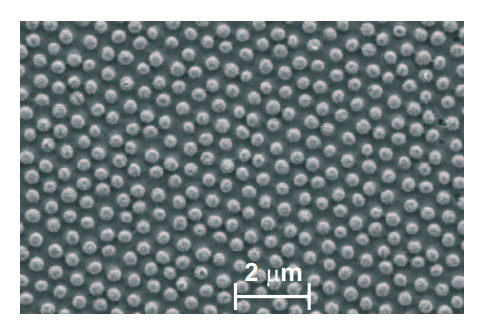Photonic Crystals Reinvent Tungsten Light Bulbs
Photonic crystals of tungsten emit visible light but without the same wasteful emission of infrared, say researchers aiming to reinvent the light bulb
Photonic crystals are nanoscopic structures designed to channel light of specific wavelengths while blocking other wavelengths.
This ability to control and filter light with great efficiency makes them hugely useful for applications such as increasing the efficiency of photovoltaic cells by absorbing light at certain optimal wavelengths.
Today, Sergei Belousov and buddies at the Kintech Lab in Moscow and a number of friends at the GE Global Research Center in New York state, say they have another application for photonics crystals. They’ve worked out how photonic crystals can dramatically improve the light emitting efficiency of tungsten in the hope of reinventing the light bulb.
This story is only available to subscribers.
Don’t settle for half the story.
Get paywall-free access to technology news for the here and now.
Subscribe now
Already a subscriber?
Sign in
You’ve read all your free stories.
MIT Technology Review provides an
intelligent and independent filter for the
flood of information about technology.
Subscribe now
Already a subscriber?
Sign in
Tungsten bulbs have had a bad press, to say the least. Tungsten has a high melting point (3695 K) and so can be heated until it glows without melting. The problem is that only 5 per cent of the light it emits is visible, the rest being infrared, which simply goes to waste. With an efficiency of only 5 per cent, tungsten bulbs have rapidly fallen out of favour.
The question Belousov and co set out to answer is whether they can engineer the nanostructure of tungsten to create a photonic crystal that emits visible light while suppressing the emission of infrared light.
They theoretically studied the properties of several structures, such as nanoscopic tungsten log piles and spheres embedded in another medium. While tungsten log piles make little difference, tungsten spheres just a fraction of a micrometre in radius do just the job, emitting light mainly in the visible region of the spectrum.
Belousov and co then tested their idea by making a tungsten photonic crystal of the required design and measuring the amount of light it emits at different frequencies. They say the new structure emits far less infrared light and has an efficiency of 15 per cent, significantly higher than the bulk material.
That’s a significant improvement and improvements on this will surely be possible. But whether it will be enough to trigger a tungsten revolution in light bulbs is open to question. The current generation of compact fluorescent bulbs can match the light output of a 100 Watt tungsten bulb using less than 30 Watts and LED lights can do it using less than 20 Watts.
If Belousov and co want to put tungsten back into light bulbs, they’ll have to beat some stiff opposition first.
Ref: arxiv.org/abs/1212.3451: Using Metallic Photonic Crystals As Visible Light Sources
